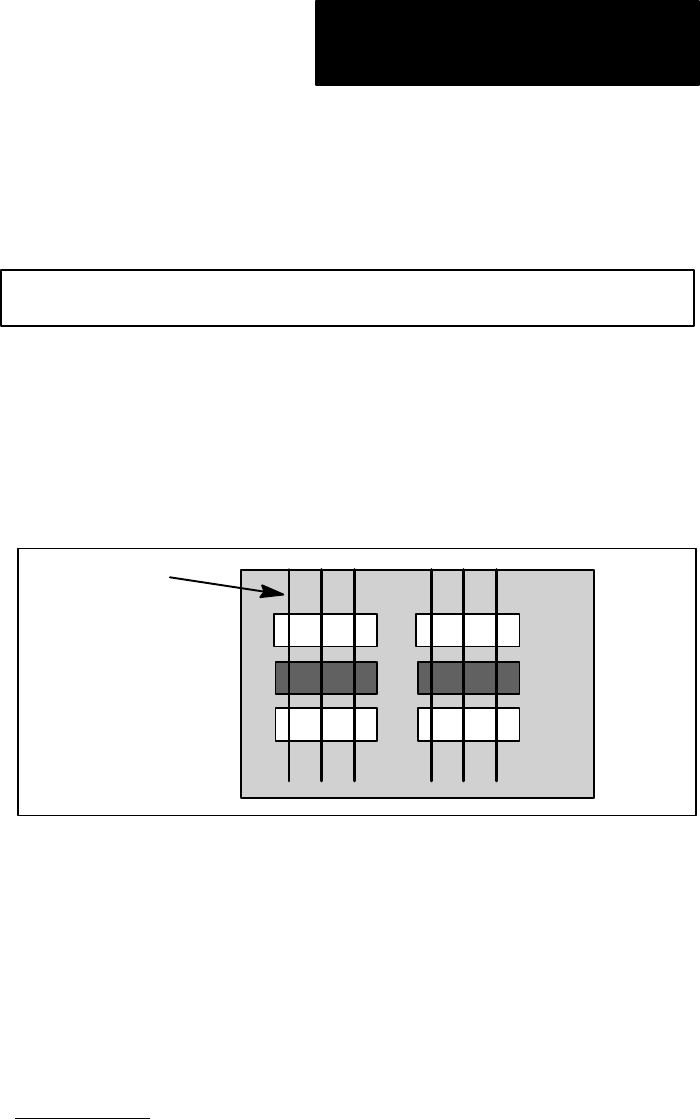Owner manual
Table Of Contents
- 5370-ND016, Bulletin 5370 Color CVIM Module MATH-PAK Option User's Manual
- Important User Information
- Table of Contents
- 1 - Using This Manual
- 2 - Introduction to the MATH-PAK Option
- 3 - Installation
- 4 - Defining Formulas
- 5 - Analysis Functions and Runtime Displays
- A - Color CVIM Communications with MATH-PAK Installed
- Index
- Back Cover

Chapter 4
Defining Formulas
4–33
Example usage: The formula below finds the variance of the results from 6
gages:
VAR(GAGE1,GAGE2,GAGE3,GAGE4,GAGE5,GAGE6)
In this example, each of six gages is set for linear gaging, in order to measure
the distance between the center of two objects (see Figure 4.18). The
formula above provides the variance of the measurements of the six gages.
In this example, if the variance value is beyond an acceptable range, the part
is rejected.
Figure 4.18 Example application, using gages and the variance operator
Gages 1-6,
each measuring
distance between
the two objects of
the same color
XXX
XXX
XXX
XXX
Logical Operators
The logical operators, AND, OR, and NOT, perform the indicated logical
function, and return a logical (1 or 0) result. Generally, it makes sense to use
operands which are logical values (1 or 0), such as conditional operation
results, or tool pass/fail results. Nonetheless, you can use operands of any
value.
AND operator
The AND operator evaluates two operands as to whether or not each equals 0
(zero), and then provides either a 1 or 0 result, as follows:
1 result – Only if both operands are non-zero.
0 result – If either or both of the operands equals zero.
Format / Usage: In general, use two operands with the operator, placing the
AND operator in the formula between the two operands.
Example usage: This formula ANDs the pass/fail results from gages 1 and 2.
A pass condition yields a 1 result, a fail yields a 0 (zero) result. The formula










